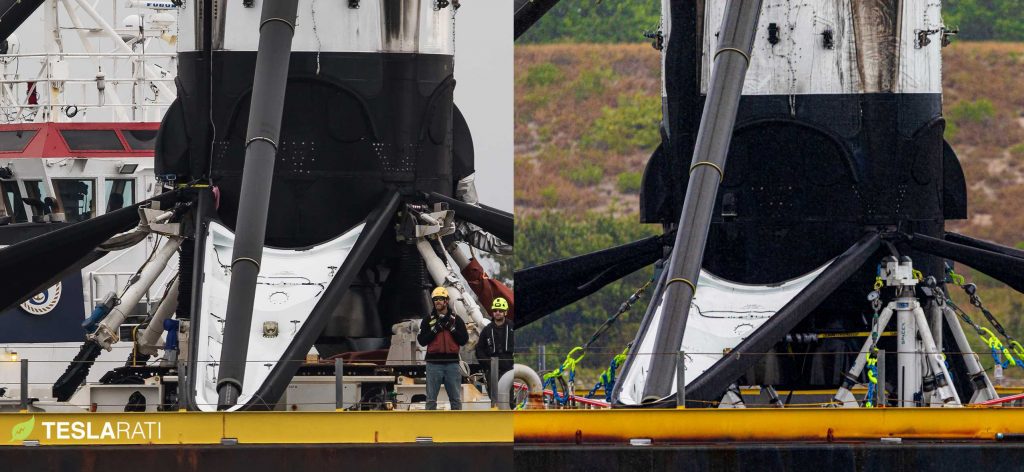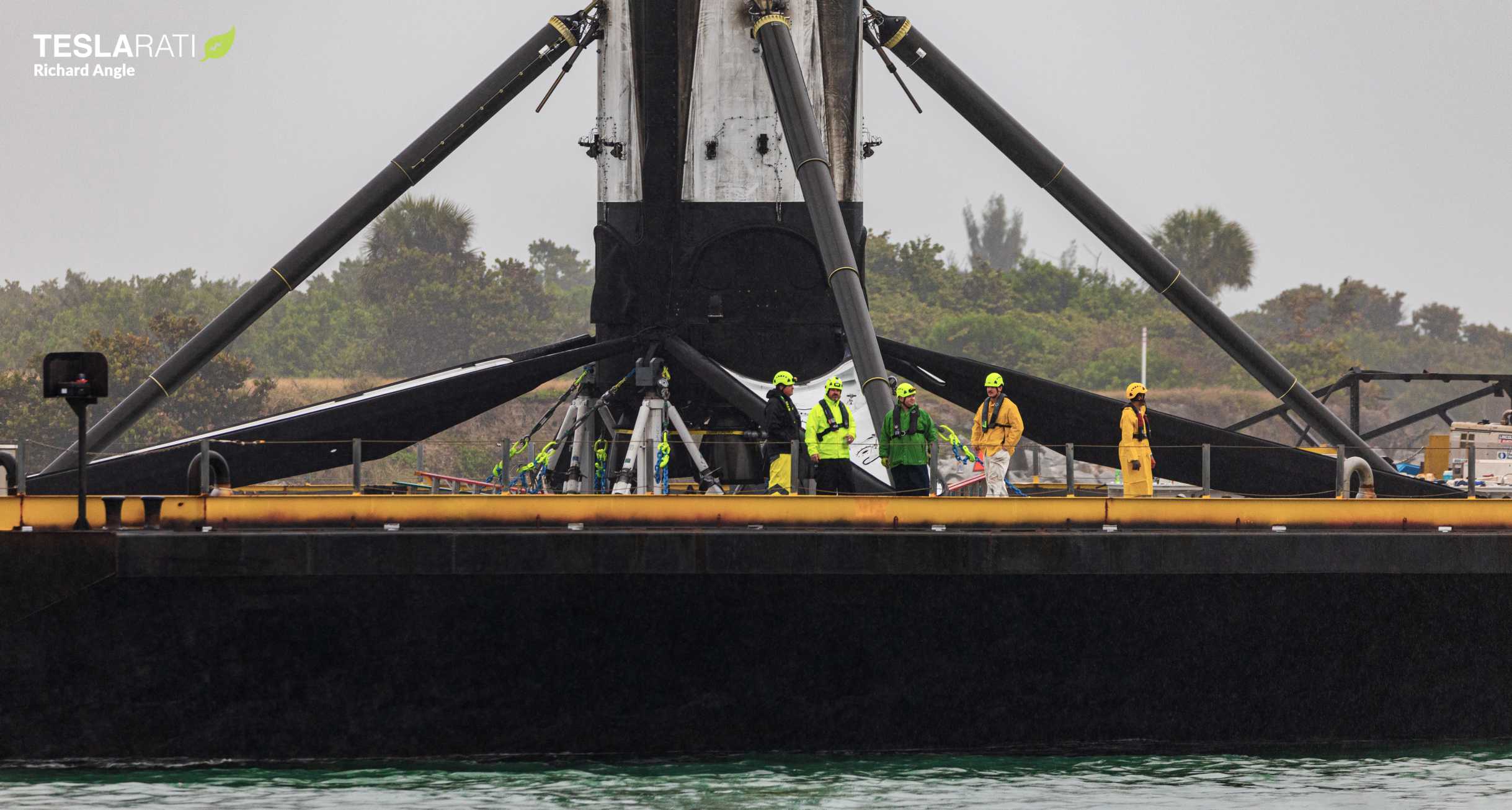
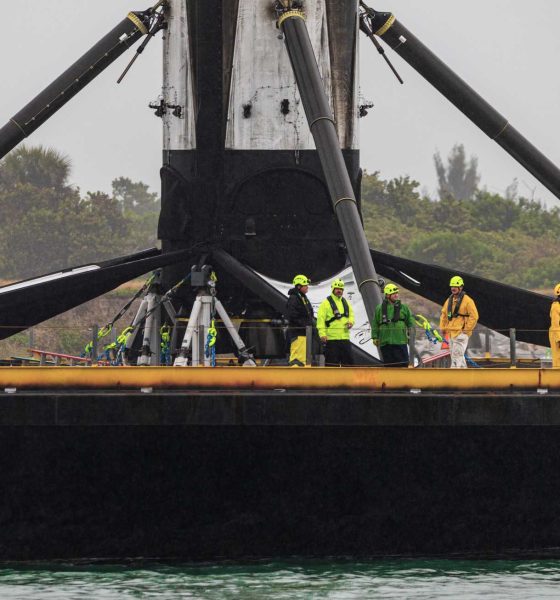
News
SpaceX rocket booster makes it back to port after hard drone ship landing
SpaceX has completed its third rocket launch of 2020 and the most recent booster to launch safely returned to Port Canaveral on Saturday after an exceptionally hard drone ship landing.
Falcon 9 booster (first stage) B1051 lifted off for the third time on January 29th, following up two prior orbital-class missions by placing SpaceX’s fourth batch of 60 Starlink satellites into low Earth orbit (LEO). B1051 debuted on March 2nd, 2019 when it became the first Falcon 9 rocket to launch SpaceX’s next-generation Crew Dragon spacecraft, successfully sending the vehicle on its way to what would end up being a flawless rendezvous with the International Space Station (ISS). Less than four months later, B1051 completed its second mission, this time lifting off from SpaceX’s Vandenberg Air Force Base (VAFB), California facilities before landing in zero-visibility fog conditions just a thousand feet from the pad.
Compared to some of the higher-energy geostationary (high orbit) launches SpaceX often performs, B1051’s two prior launches allowed for relatively gentle reentries and landings. On January 29th, 2020, after sending SpaceX’s 3rd batch of upgraded Starlink v1.0 satellites (Starlink V1 L3) on their way to space, the Falcon 9 booster experienced the hardest successful landing seen after a SpaceX launch in quite some time.
With Starlink V1 L3 complete, SpaceX has officially launched an incredible 120 satellites weighing some 32 metric tons (70,500 lb) in a single month – 22 days, to be precise. If everything goes as planned, those two monthly Starlink launches should become SpaceX’s average over the rest of 2020, necessary to satisfy the company’s goal of completing 20-24 Starlink launches this year alone. If SpaceX replicates its January successes this month, the company’s Starlink constellation – already ~230 satellites strong – may even be ready to start serving internet to customers in the northern US and Canada as early as March 2020, less than two months from now.
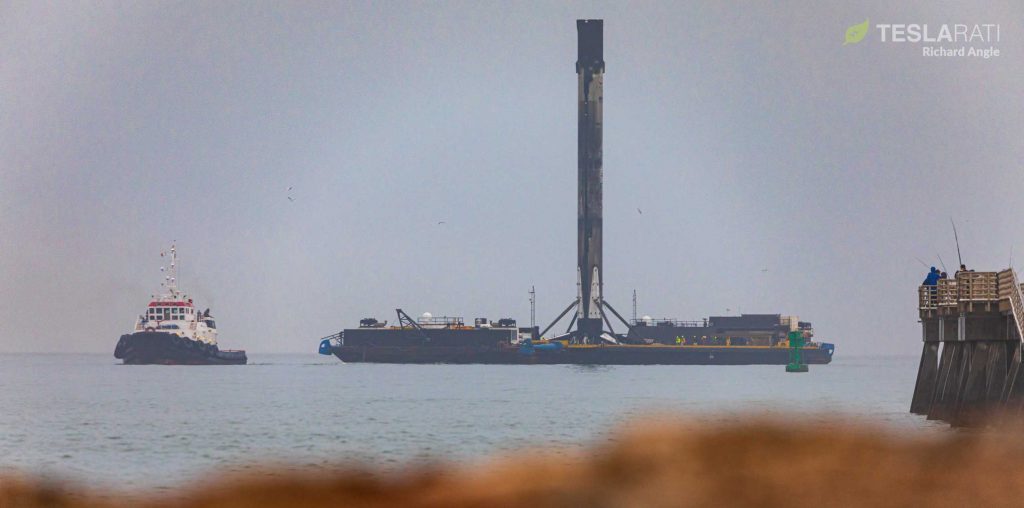
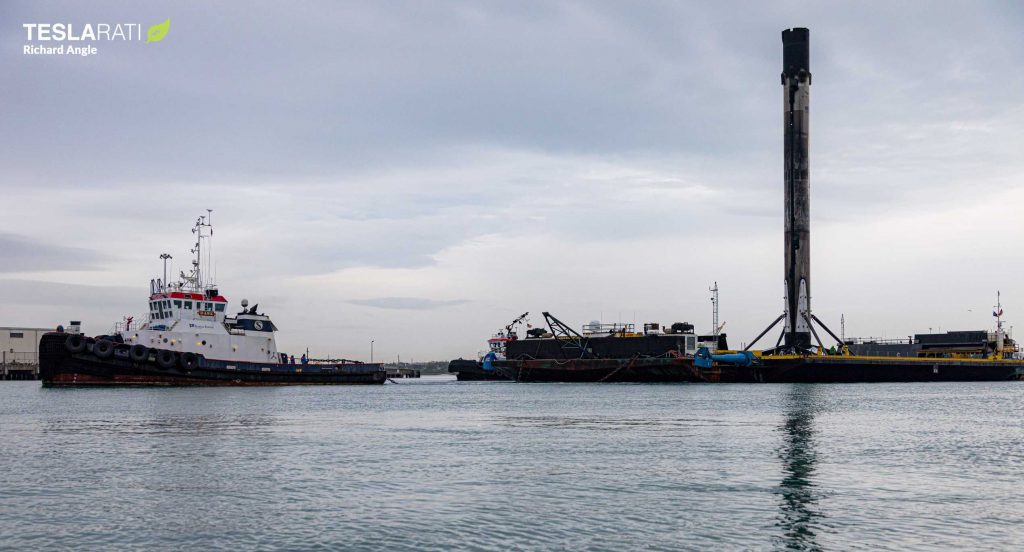
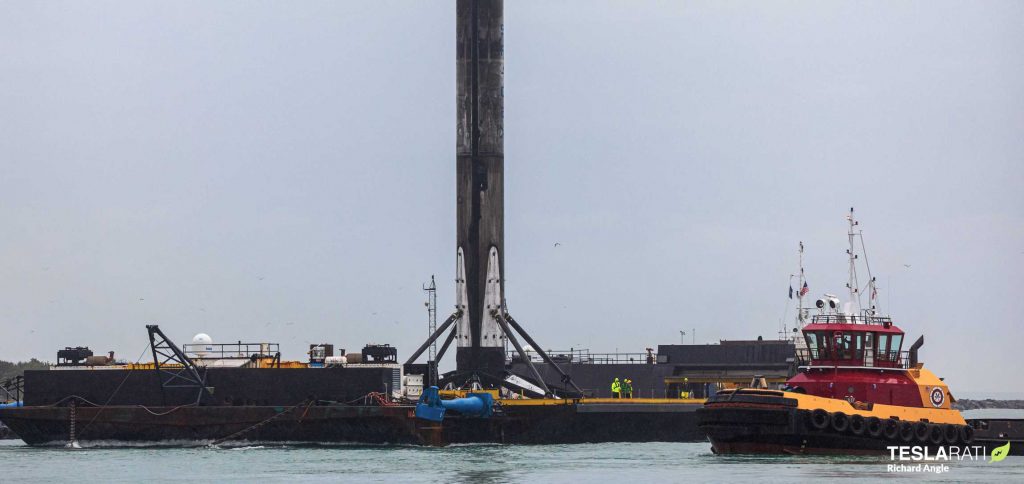
Meanwhile, the mission marked SpaceX’s second Falcon 9 landing and recovery of the new year, as well as the sixth time an orbital-class SpaceX booster has completed three launches. SpaceX continues to push the envelope of reusable rocketry ever since it debuted Falcon 9’s Block 5 upgrade in May 2018.
Designed to enable no less than 10 launches per booster with minimal refurbishment in between, SpaceX’s Block 5 reusability milestones have gotten much closer together ever since the company began dedicated Starlink launches, reusing a payload fairing for the first time and launching two Falcon 9 boosters for the fourth time in just the last two and a half months. In fact, SpaceX already has plans to launch Falcon 9 booster B1048 for the fifth time – another major reusability first – as early as the next 4-5 weeks.
Hard landing; tough rocket
Starlink V1 L3’s launch followed a trajectory almost exactly identical to the two V1 missions that preceded it in November 2019 and January 2020 and Falcon 9 B1051 ignited its central Merlin 1D engine for the last time around eight minutes after liftoff. Twenty seconds or so later, the Falcon 9 booster rapidly shut down its landing engine, visibly falling several feet onto the deck of drone ship Of Course I Still Love You (OCISLY).
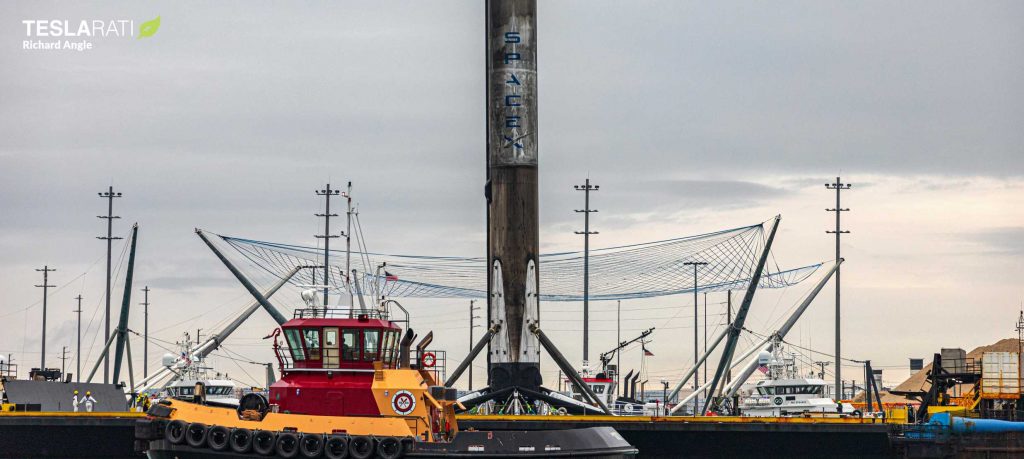
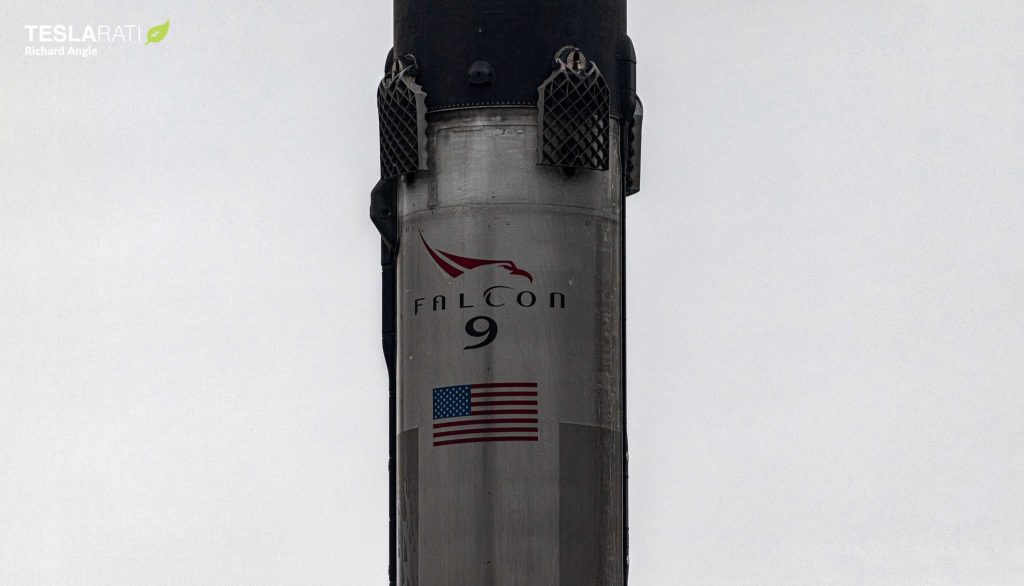
The results of that unintentionally hard landing are extremely apparent in photos taken of the same booster after its first (March 2019) and third (Jan 2020) landings on drone ship OCISLY, compared above. Taken from almost identical perspectives as the drone ship passed through the mouth of Port Canaveral, the difference in the booster’s height and stance are hard to miss, with B1051’s engine bells and the black ‘belt’ of its heat-shielded engine section clearly sitting several feet lower after Starlink V1 L3.
While subtle, the most important difference is near the tips of each visible landing leg’s telescoping boom, visible in the form of a final, smaller cylinder on the left (earlier) image. On the right, that cylinder has effectively disappeared. This is actually an intentional feature of Falcon 9’s landing leg design: known as a ‘crush core’, the tip of each leg boom holds a roughly 1m (3ft) long cylinder of aluminum honeycomb, optimized to lose structural integrity (crush) only after a specific amount of force is applied. In essence, those crush cores serve as dead-simple, single-use shock absorbers that can be reused as long as a given booster’s landing is gentle enough.
B1051’s third landing was definitely not gentle enough, but it appears that the booster’s rough fall onto the drone ship’s deck was just within the safety margins those crush cores provide. Why B1051 fell onto the deck is unclear, potentially caused by the drone being at the bottom of a swell or a last-second anomaly with the booster’s landing engine. Thankfully, regardless of the cause of the anomaly, B1051’s crush cores can be quite easily replaced, meaning that the booster can remain operational as long as its hard landing didn’t cause any less-visible damage or stress elsewhere on the rocket.
In short, SpaceX smart design decisions very likely allowed a part worth just a few thousand dollars to save a Falcon 9 booster worth tens of millions of dollars from the scrap heap. With a little luck, B1051 should have at least several more launches in its future before entering retirement.
Check out Teslarati’s Marketplace! We offer Tesla accessories, including for the Tesla Cybertruck and Tesla Model 3.

News
Tesla hints at Starlink integration with recent patent
“By employing polymer blends, some examples enable RF transmission from all the modules to satellites and other communication devices both inside and outside the vehicle.”

Tesla hinted at a potential Starlink internet terminal integration within its vehicles in a recent patent, which describes a vehicle roof assembly with integrated radio frequency (RF) transparency.
The patent, which is Pub. No U.S. 2025/0368267 describes a new vehicle roof that is made of RF-transparent polymer materials, allowing and “facilitating clear communication with external devices and satellites.”
Tesla believes that a new vehicle roof design, comprised of different materials than the standard metallic or glass elements used in cars today, would allow the company to integrate modern vehicular technologies, “particularly those requiring radio frequency transmission and reception.
Tesla has recently filed a US patent application on integrating RF transparent materials into the roof structure.
“facilitating clear communication with external devices and satellites”
Tesla fleet is getting @Starlink connectivity integration soon. LFG @Tesla @elonmusk… pic.twitter.com/bLa8YtPLd1
— Chansoo Byeon (@Chansoo) December 9, 2025
Instead of glass or metallic materials, Tesla says vehicles may benefit from high-strength polymer blends, such as Polycarbonate, Acrylonitrile Butadiene Styrene, or Acrylonitrile Styrene Acrylate.
These materials still provide ideal strength metrics for crashworthiness, stiffness for noise, vibration, and harshness control, and are compliant with head impact regulations.
They would also enable better performance with modern technologies, like internet terminals, which need an uninterrupted signal to satellites for maximum reception. Tesla writes in the patent:
“By employing polymer blends, some examples enable RF transmission from all the modules to satellites and other communication devices both inside and outside the vehicle.”

One of the challenges Tesla seems to be aware of with this type of roof design is the fact that it will still have to enable safety and keep that at the forefront of the design. As you can see in the illustration above, Tesla plans to use four layers to increase safety and rigidity, while also combating noise and vibration.
It notes in the patent that disclosed examples still meet the safety requirements outlined in the Federal Motor Vehicle Safety Standards (FMVSS).
Starlink integrated directly into Tesla vehicles would be a considerable advantage for owners. It would come with a handful of distinct advantages.
Initially, the inclusion of Starlink would completely eliminate cellular dead zones, something that is an issue, especially in rural areas. Starlink would provide connectivity in these remote regions and would ensure uninterrupted service during road trips and off-grid adventures.
It could also be a critical addition for Robotaxi, as it is crucial to have solid and reliable connectivity for remote monitoring and fleet management.
Starlink’s growing constellation, thanks to SpaceX’s routine and frequent launch schedule, will provide secure, stable, and reliable internet connectivity for Tesla vehicles.
Although many owners have already mounted Starlink Mini dishes under their glass roofs for a similar experience, it may be integrated directly into Teslas in the coming years, either as an upgrade or a standard feature.
News
Tesla supplements Holiday Update by sneaking in new Full Self-Driving version
It seems Tesla was waiting for the Hardware 4 rollout, as it wanted to also deploy a new Full Self-Driving version to those owners, as it appeared in the release notes for the Holiday Update last night.

Tesla has surprised some owners by sneaking in a new Full Self-Driving version with the wide release of the Holiday Update, which started rolling out to Hardware 4 owners on Friday night.
Tesla has issued a controlled and very slow release pattern with the Holiday Update, which rolls out with Software Version 2025.44.25.5.
For the past two weeks, as it has rolled out to Hardware 3 and older Tesla owners, the company has kept its deployment of the new Software Version relatively controlled.
It seems Tesla was waiting for the Hardware 4 rollout, as it wanted to also deploy a new Full Self-Driving version to those owners, as it appeared in the release notes for the Holiday Update last night.
Tesla Full Self-Driving v14.2.1.25 made its first appearance last night to Hardware 4 owners who are members of the Early Access Program (EAP). It appears to be a slight refinement from FSD v14.2.1, which has been out for a couple of weeks.
Tesla v2025.44.25.5 Holiday update incoming
Also Full Self-Driving v14.2.1.25!!! pic.twitter.com/74D7S0UGXz
— TESLARATI (@Teslarati) December 13, 2025
Many owners welcome the new FSD version, us included, because we’ve been less than impressed with v14.2.1. We have experienced some minor regressions with v14.2.1, especially with Speed Limit recognition, Speed Profile tinkering, and parking performance.
As it stands, Full Self-Driving is still particularly impressive, but Tesla is evidently having an issue with some of the adjustments, as it is still refining some of the performance aspects of the suite. This is expected and normal with some updates, as not all of them are an improvement in all areas; we routinely see some things backtrack every once in a while.
This new FSD version is likely to take care of those things, but it also includes all of the awesome Holiday Update features, which include:
- Grok with Navigation Commands (Beta) – Grok will now add and edit destinations.
- Tesla Photobooth – Take pictures inside your car using the cabin-facing camera
- Dog Mode Live Activity – Check on your four-legged friend on your phone through periodic snapshots taken of the cabin
- Dashcam Viewer Update – Includes new metrics, like steering wheel angle, speed, and more
- Santa Mode – New graphics, trees, and a lock chime
- Light Show Update – Addition of Jingle Rush light show
- Custom Wraps and License Plates – Colorizer now allows you to customize your vehicle even further, with custom patterns, license plates, and tint
- Navigation Improvements – Easier layout and setup
- Supercharger Site Map – Starting at 18 pilot locations, a 3D view of the Supercharger you’re visiting will be available
- Automatic Carpool Lane Routing – Navigation will utilize carpool lanes if enabled
- Phone Left Behind Chime – Your car will now tell you if you left a phone inside
- Charge Limit Per Location – Set a charge limit for each location
- ISS Docking Simulator – New game
- Additional Improvements – Turn off wireless charging pad, Spotify improvements, Rainbow Rave Cave, Lock Sound TRON addition
Tesla also added two other things that were undocumented, like Charging Passport and information on USB drive storage to help with Dashcam.
Cybertruck
Tesla updates Cybertruck owners about key Powershare feature

Tesla is updating Cybertruck owners on its timeline of a massive feature that has yet to ship: Powershare with Powerwall.
Powershare is a bidirectional charging feature exclusive to Cybertruck, which allows the vehicle’s battery to act as a portable power source for homes, appliances, tools, other EVs, and more. It was announced in late 2023 as part of Tesla’s push into vehicle-to-everything energy sharing, and acting as a giant portable charger is the main advantage, as it can provide backup power during outages.
Cybertruck’s Powershare system supports both vehicle-to-load (V2L) and vehicle-to-home (V2H), making it flexible and well-rounded for a variety of applications.
However, even though the feature was promised with Cybertruck, it has yet to be shipped to vehicles. Tesla communicated with owners through email recently regarding Powershare with Powerwall, which essentially has the pickup act as an extended battery.
Powerwall discharge would be prioritized before tapping into the truck’s larger pack.
However, Tesla is still working on getting the feature out to owners, an email said:
“We’re writing to let you know that the Powershare with Powerwall feature is still in development and is now scheduled for release in mid-2026.
This new release date gives us additional time to design and test this feature, ensuring its ability to communicate and optimize energy sharing between your vehicle and many configurations and generations of Powerwall. We are also using this time to develop additional Powershare features that will help us continue to accelerate the world’s transition to sustainable energy.”
Owners have expressed some real disappointment in Tesla’s continuous delays in releasing the feature, as it was expected to be released by late 2024, but now has been pushed back several times to mid-2026, according to the email.
Foundation Series Cybertruck buyers paid extra, expecting the feature to be rolled out with their vehicle upon pickup.
Cybertruck’s Lead Engineer, Wes Morrill, even commented on the holdup:
As a Cybertruck owner who also has Powerwall, I empathize with the disappointed comments.
To their credit, the team has delivered powershare functionality to Cybertruck customers who otherwise have no backup with development of the powershare gateway. As well as those with solar…
— Wes (@wmorrill3) December 12, 2025
He said that “it turned out to be much harder than anticipated to make powershare work seamlessly with existing Powerwalls through existing wall connectors. Two grid-forming devices need to negotiate who will form and who will follow, depending on the state of charge of each, and they need to do this without a network and through multiple generations of hardware, and test and validate this process through rigorous certifications to ensure grid safety.”
It’s nice to see the transparency, but it is justified for some Cybertruck owners to feel like they’ve been bait-and-switched.
